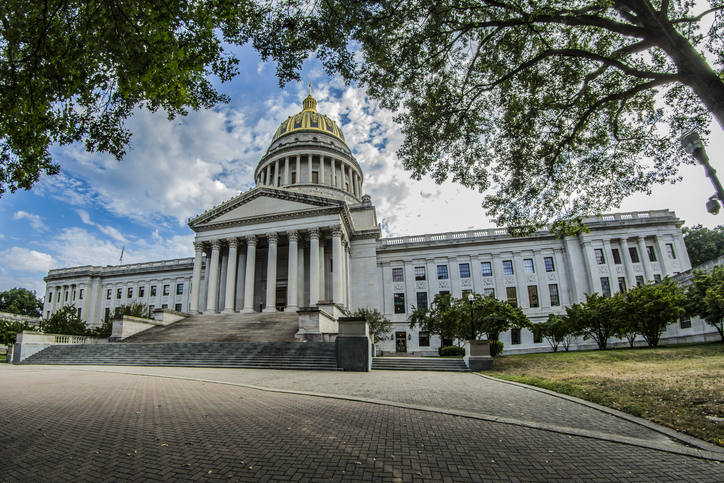Did Y’all Know There Are 2 Predominantly White HBCUs In West Virginia? Read That Again

Did y’all know there are at least two historically Black colleges in America (West Virginia to be specific) that are predominantly white?
Now, you probably read the above sentence and said to yourself: “Nah, that can’t be right. How are they HBCUs if their student body isn’t Black? What do you think the “B” stands for? It ain’t ‘bring on the white folks.’”
Well, apparently, for all the griping white people do about DEI, affirmative action, reverse discrimination and the very existence of Black institutions — all of which only exist because Black people have been historically excluded from so many institutions that white people had full access to—some Caucasian administrators don’t mind taking advantage of the minority designation when it suits them.
Also, it turns out that desegregation opened the door for white people to gentrify and take over Black spaces.
Let’s start with West Virginia’s Bluefield State University, a college that held on to its HBCU title and the federal funding that comes with it, despite being around 71% white, which, to be fair, is an improvement from around a decade ago, when it was 90% white.
Here’s how NPR explained the college’s racial transition in 2013:
It opened in the late 19th century as the Bluefield Colored Institute, created to educate the children of black coal miners in segregated West Virginia. Although it still receives the federal funding that comes with its designation as a historically black institution, today Bluefield State College is 90 percent white. The road that separates those realities is as rocky as any story of racial transition in post-World War II America.
This part of West Virginia was coal country and still is — trains still haul coal along those tracks hugging the college’s southern edge. Many of the black folks who migrated to West Virginia to work in the coal mines sent their children to the Bluefield Colored Institute. By the 1920s, the school was a football power among black colleges and a stepping stone for much of the region’s black middle class.
In 1954, just a few years after Bluefield State earned full accreditation, the Supreme Court declared segregation illegal in Brown v. Board of Education, reshaping the landscape of America’s schooling. Suddenly, black students had more educational options to choose from, in theory anyway. And black colleges and universities like Bluefield State began having to compete with better-funded predominantly white schools for top black students.
At the same time, new technology was making mining jobs obsolete, and many black folks started leaving the state, heading North to go work in the factories. White veterans started coming back to West Virginia after fighting in Korea. And with the government footing their tuition costs through the G.I. Bill, the state’s inexpensive black schools — the other was West Virginia State University — started looking more and more attractive to white students.
“We had an out-migration of students of color because of Brown v. Board of Ed,” said Jim Nelson, a spokesman for the school, “at roughly the same time that we had an in-migration of largely Caucasian students wanting to use their G.I. Bill benefits. So that’s what, as much as anything, that’s what flipped the complexion of the school.”
But that’s not all that changed the racial tides at Bluefield; a change in leadership also served to make this HBCU a predominantly white institution (PWI).
By the mid-1960s, Bluefield State was about half Black. In 1966, the state selected Wendell G. Hardway to serve as the college’s first white president. By 1968, Hardway had hired 23 new faculty members — all of whom were white. So, the faculty at Bluefield, which had been all-Black as recently as 1954, was, by 1967, only 30% Black. If that’s not a picture-perfect example of why Black people need to gatekeep Black spaces, I don’t know what is.
The situation is similar at West Virginia State University, which, according to its website, was “founded in 1891 as a Historically Black College” but has now “evolved to serve a population that is richly diverse in ethnicity, geography, residential/commuter, high school graduates and adult learners.”
Riiiight, so—let’s talk about that rich ethnic diversity right quick.
Currently, the student body at WVSU, which also continues to maintain its HBCU status, is 67.6% White and only 7.37% Black or African American. And the so-called diversity doesn’t lie in the other ethnic groups either, with mixed race students at 3.27%, Hispanic or Latino students at 2.17%, Asian students at 1.27%, American Indian or Alaska Native students at 0.174%, and Native Hawaiian or Other Pacific Islanders at 0.0868%.
Imagine a school calling itself an HBCU while only its white students even reach double-digit percentage points.
It’s not as if these schools are leading the HBCUs that are actually predominantly Black on an academic level. In fact, of the 107 designated HBCUs in the U.S., Bluefield State and West Virginia State are ranked at No. 38 and No. 42, respectively.
It’s worth mentioning that these aren’t the only HBCUs with growing white student bodies. For example, Lincoln University, an HBCU in Jefferson City, Missouri, is still predominantly Black at around 42%, but 40% of the students there are white.
Again, white conservatives have claimed for generations that the existence of Black colleges is inherently racist (also see Black History Month, BET, etc.), ignoring the fact that white people can and do attend Black colleges, and even receive minority scholarships to do so.
But what happens when we open the gates to our spaces and it results in us getting phased out? It’s almost as if what’s ours is theirs and what’s theirs is still theirs, or else it’s DEI.
Ironic, right?
SEE ALSO:
4 HBCUs Come Together To Launch Groundbreaking Digital Learning Platform




